Today I thought I’d write about some pictures taken not by me but by my granddad, back in 1944-46 during his time with the RAF in the Far East. He was a member of ground crew working mainly on Spitfires during the Japanese retreat through Burma, and travelled through not only through Burma (now Myanmar), Siam (now Thailand) and French-Indo-China (now Vietnam), and India (still India) before heading back to Britain via Egypt (still Egypt) and Palestine (largely now Israel).
I’ve always found the two Word Wars completely fascinating (largely because I find it hard to believe that they actually happened), and when you come across something that relates your own family directly to such a massive human upheaval, it’s difficult not to get hooked.
My granddad joined the RAF as soon as he turned 18; 18 always seemed a very grown-up age until I reached it. My smallest brother has just turned 18, and I cannot imagine how it must have felt for his historical counterparts and their friends families to know that turning 18 meant joining in with a worldwide conflict. (Not that it’s exactly ideal at any age.) Still, my granddad seems to have been pretty keen to go. He’d grown up in a military family, and he loved aeroplanes. He wrote almost nothing about his wartime experiences, but he did leave a large album of photographs. Through them, a brief list he made of dates and places he was posted to, and from much fuller accounts very helpfully published on this website dedicated to 152 Squadron (to which my granddad was posted), I have been able to piece together his movements during those months, and follow his progress on a map. That was a pretty awesome afternoon. I love the internet.
Today I’ve been photographing his photographs to send to Rob who runs the 152 website, and it’s amazing what a difference it makes to some of them to see them blown up large (many of the originals are tiny). As far as I’m aware he never had a camera in later life, or showed any interest in photography. He must have really wanted to remember those months.
Of course I shall never know (my granddad died in 1997), but I can only imagine that the memories must have been rather ambiguous ones. The photo album makes it look almost like a lads’ holiday (if you ignore some of the pictures of aeroplanes and the military uniforms) – there are fancy dress parties and football matches and sightseeing trips. But it can’t all have been like that; not long after he arrived in Burma, 152’s camp was bombed, and several of the men killed and others injured. 152’s website includes a few pictures from the aftermath of the bombing raid – a procession, men gathered around the graves, the bombed-out camp, and some of the injured men recovering in hospital. Strange to think that my granddad is most likely in that funeral procession somewhere.
Here are some of my favourite pictures from his own collection, or at least some of those that I find most interesting, that seem to say something about what his life was like back then.
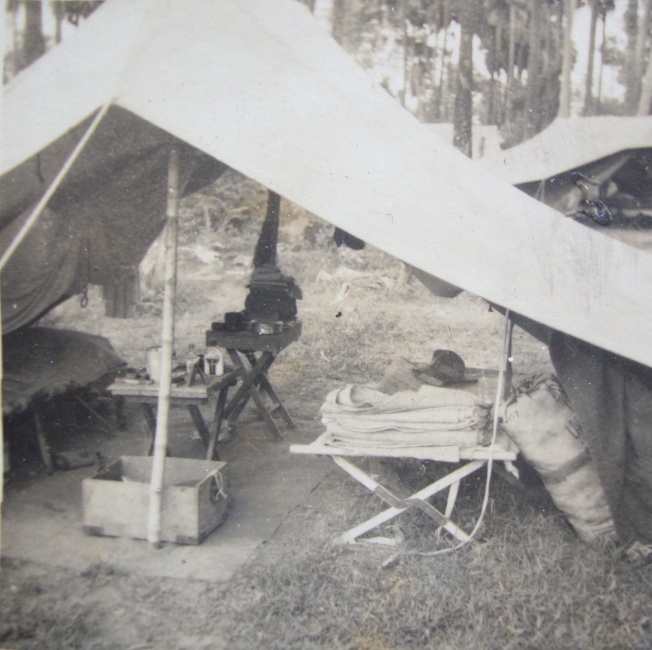
- It seems that they camped for pretty much 18 months, moving every few weeks, hacking airstrips out of the jungle where necessary
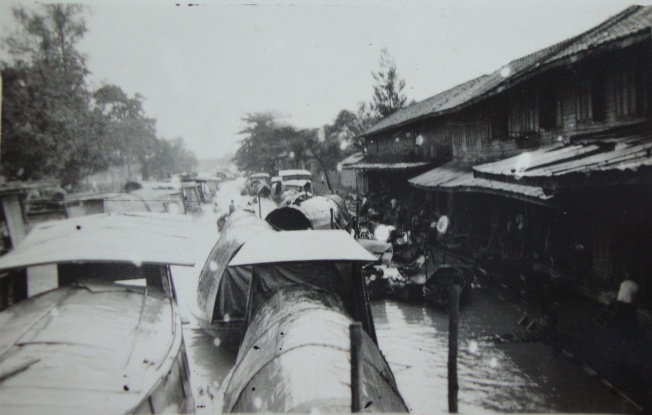
- According to my granddad’s note on the back of the picture, this is a ‘Typical canal scene, Bangkok, 1945’. He seems to have been pretty keen to document the places he went to and the people he saw. But then again, the amount of sightseeing shots could be hugely misrepresentative – I don’t imagine there’s alot of time for taking pictures during an air raid.
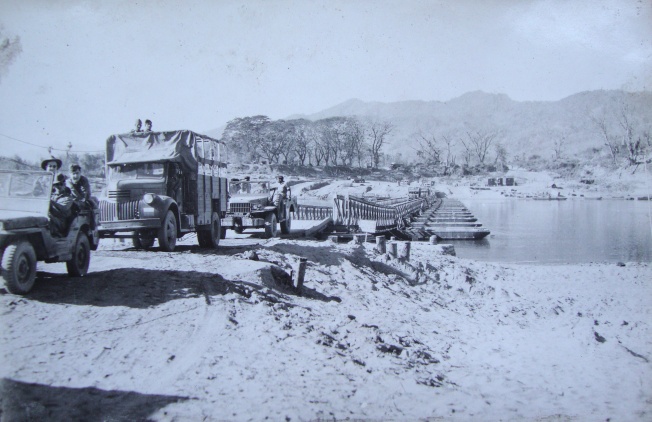
- A photographer was posted to 152 Squadron to document the Army’s crossing of a major river in Burma, and I’m pretty sure this is one of the pictures he took. The RAF plane he was being flown in was shot down in a ‘friendly fire’ incident by another Spitfire; despite the pilot being knocked out as the plane fell out of the sky, he regained conscious in time to crash land safely enough that both pilot and photographer lived to boast that they were two of very few to have been shot down by a Spitfire and survived.
It wasn’t until I blew this picture up on the computer that I realised it looks (to my untrained eye) very much like they are feeding bullets into the aeroplane’s machine gun
Probably taken in Saigon in 1946. My granddad is left of centre in middle row, in glasses.
Going through these photographs and the other bits and pieces he kept (medals, foreign currency, a tiny compass to be swallowed in the event of capture) got me thinking that all around the world, most houses must have something in them relating to conflict. I wrote an essay about this recently, arguing that personal or family collections may be a great un-tapped resource in our understanding of experiences and memories of conflict. I may be right, I may not be.
As Hirsch and Spitzer (2006) point out, we ask more of photographs than they can really deliver. Photographs seem to offer something magical: a direct window into the past. I guess this is what Barthes means by his idea of the ‘punctum’ – something that provides a powerful affective connection to the past, that seems to puncture through the layers of time (that’s the first and probably last time I’ll be able to quote Barthes on anything).
Yet photographs cannot, unfortunately, answer all of our questions. We cannot step into them and look around at the technicolour, noisy, physical world in which someone pressed the shutter button, nor can we do more than make educated guesses at what is going on in the mental worlds of the people in front of and behind the camera. They let us get tantalisingly close to doing so, but cannot take us all the way to a full understanding of the moment of their creation. Still, without my granddad around to talk to anymore, I think his photographs are the next best thing. I can’t get inside them completely, but they tell me so much more about his experiences than I would have known otherwise.
Anyway, this has all turned out to be rather longer than I intended, apologies to any readers I may have who have stuck with my musings to the end.

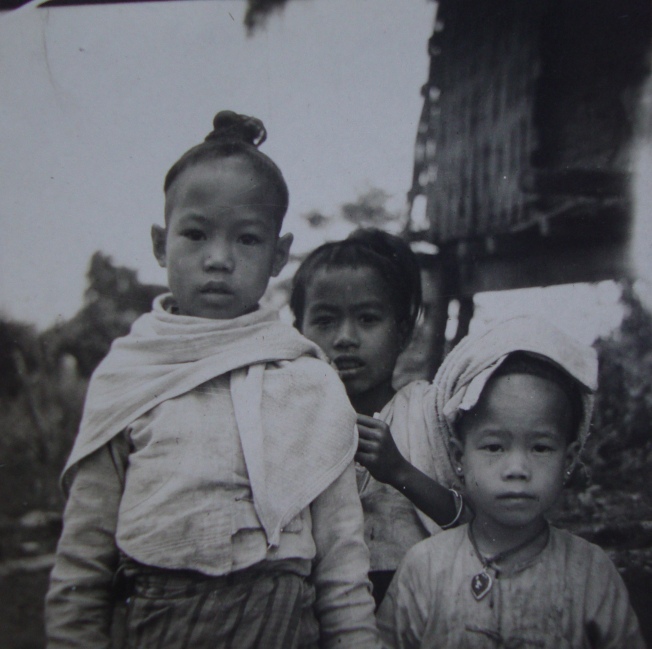
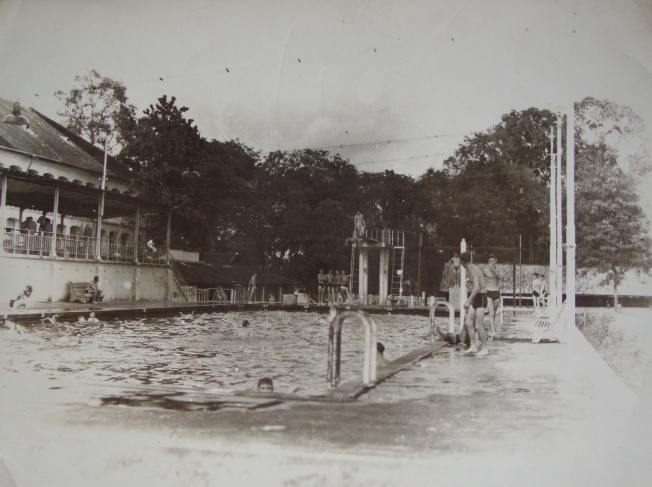
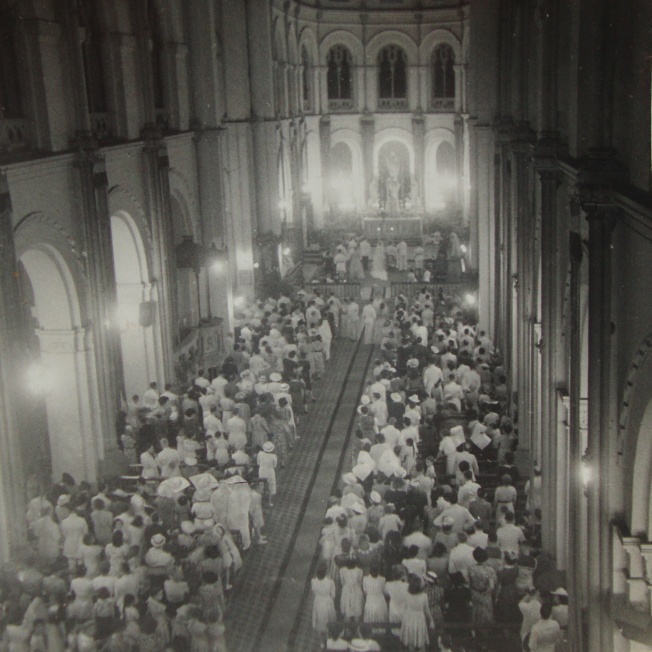
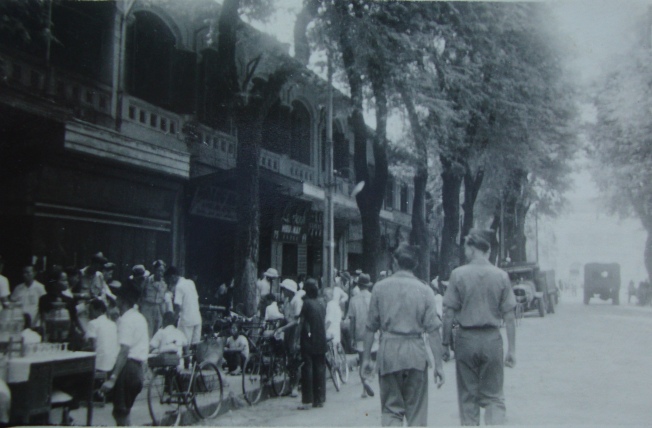
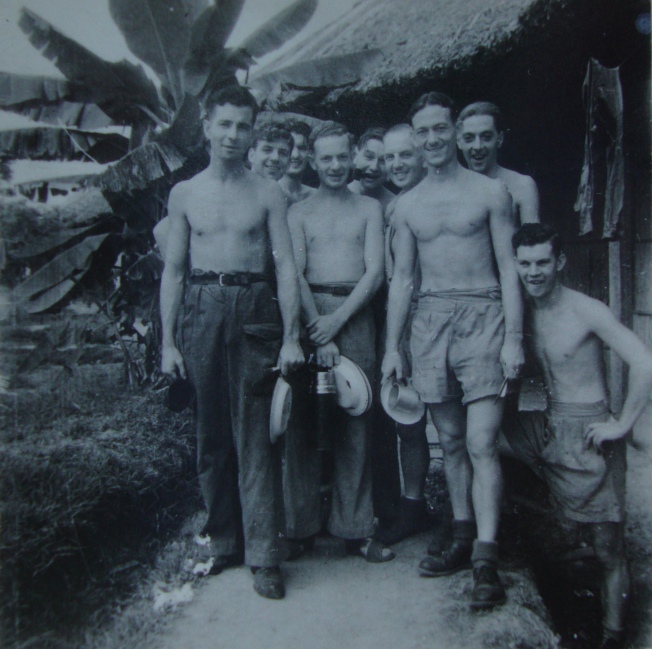
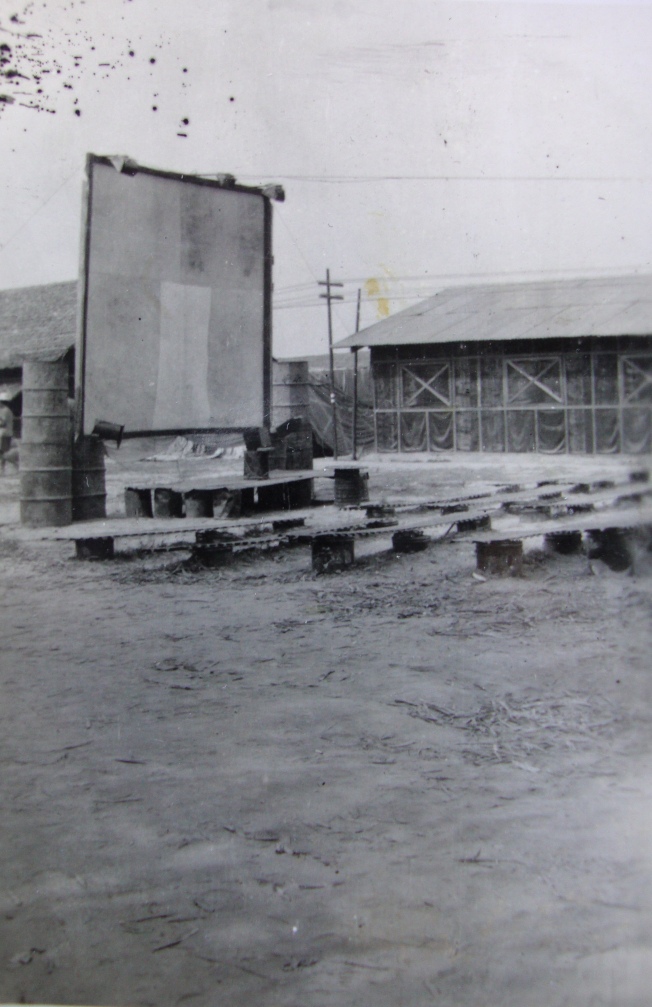
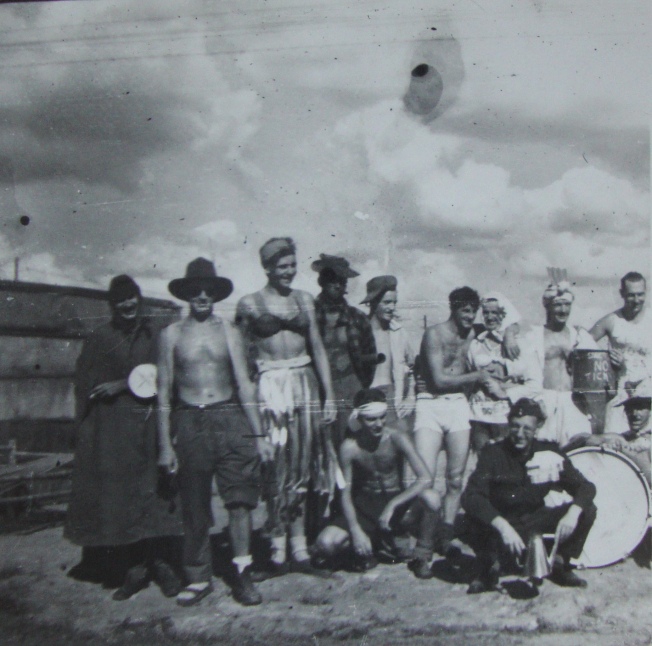
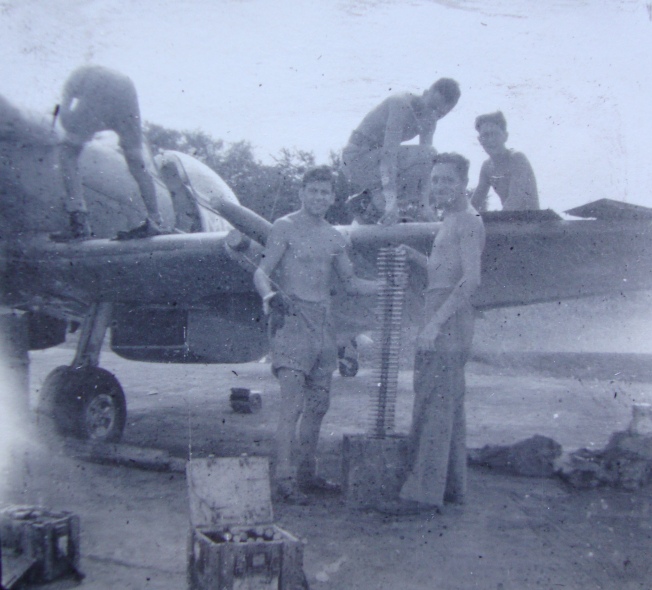
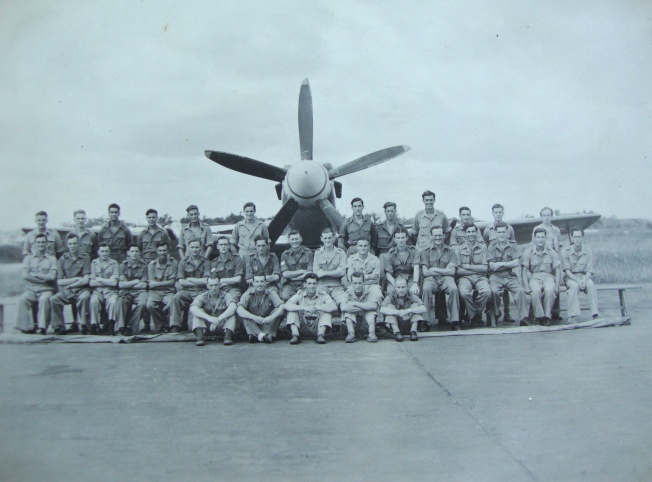
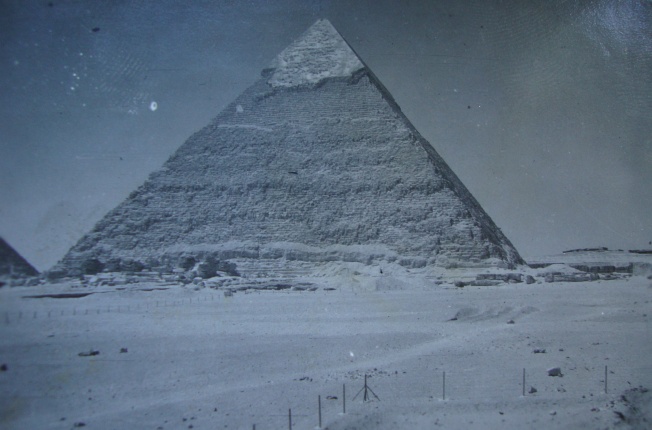
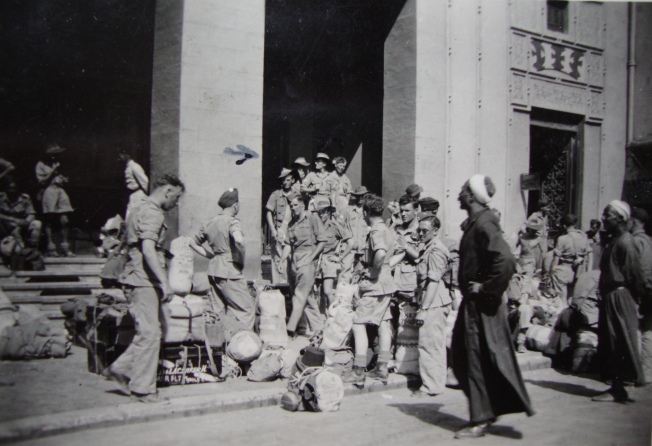
What a great post I enjoyed it immensely!
Pingback: Satisfaction is… | toomanyphotos